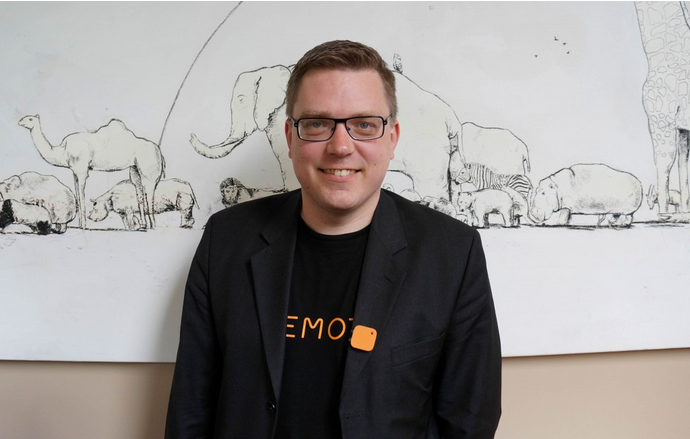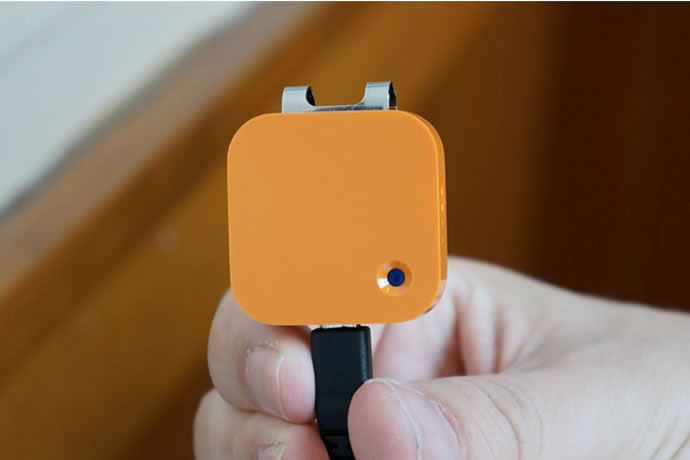“That’s creepy,” I thought, referring to Memoto’s syrup-sweet introduction video on its Kickstarter page. A small camera that clips to your shirt and takes a photo every 30 seconds has the potential to snap candid, unwanted scenes in situations that don’t call for recollection.
But the more I thought about it, the increasingly curious I became about the implications of such a tool. This was pre-Google Glass, and Memoto was promising a non-invasive way to keep track of your daily activities. I backed it; I didn’t regret it.
In June 2013, I had the chance to sit down with Memoto’s progenitor and the company’s CEO, Martin Källström. A brilliant, soft-spoken Swede, he leads a company that has expanded from just a few people to around 15 employees in under two years. Memoto is scheduled to begin shipping by the end of the summer — September, most likely — after over 2,200 Kickstarter backers paid between $199 and $249 for a chance to get one early. The campaign intended to raise $50,000, enough to build just 200 Memotos. They ended with over $550,000, a number even today Martin cannot believe.
Combined with numbers from the newly-launched pre-order portal, there are 4,000 people waiting for their Memoto, and Martin is cognizant of how expectations really are.

“There is an immense amount of emotion with photos,” he tells me while showing off a near-finished combination of the Memoto camera itself, a matte square with rounded edges, a small hole for the 5MP sensor and, behind, a secure clip for attaching. “Memories are fleeting,” he continues, asserting that wearable technologies such as Memoto will allow users to remember everyday, innocuous moments, the kinds that refresh and realign bigger, more important memories.

Källström spent a year designing and prototyping Memoto before launching the Kickstarter project. There is a lot of really interesting technology in the sensor, but it’s the interaction with the cloud and your smartphone that turns it into a fully-formed product. There is a battery inside big enough to last for two days, shooting a photo every 30 seconds. A GPS provides location data, and EXIF data is available for the time and other minute details.
Otherwise, the hardware is extremely minimal: four LED lights on the side indicate battery power or charge status, while the microUSB does all of the requisite syncing. And syncing you will do.
Because there is no wireless capability, you’re going to need to upload all those photos — around 1,000 per day, which totals between 1.5 and 2 gigabytes — to your computer. These will then upload to Memoto’s cloud servers and subsequently sync to the iPhone and Android apps.
“It’s data mining for your personal life,” continues Källström, whose Scandinavian verbiage is a joy to hear. He’s quiet, almost shy, but speaks emphatically about his product. “People wish to know more about themselves,” and admits that the idea for Memoto was spawned from that very reasoning.
The device will launch missing a few features that the company plans to add at a later date. Things like being able to tap the device twice to take a photo on demand, or the ability to detect specific faces among the thousands of photos, are improvements to come later. For now, the core functionality — the hardware, OS X and Windows clients, and iPhone and Android apps — will be available from the beginning. He said there’s a good chance, however, that the Android version could face a few delays due to a lack of software engineers.

Once the photos have been upload to Memoto’s servers, they are then synced with your smartphone and become searchable. If you’re trying to find a specific photo, being able to query by approximate location or time of day will help immensely. So will the ability to only take photos you want: turn the camera onto its face, or place it in a dark pocket, and it stops capturing. This ensures privacy is maintained when desired, and saves battery when Memoto is not in use.
Memoto also plans to do something with the photos you capture, making them sortable by Moments. The software uses algorithms to determine which photos are best — those that have a face or are less blurry than their companions — and categorizes them by time, place and instance. This bundling of notable instances helps set a positive external face for the software, as scrolling through the app’s many photos should only surface the ones really worth viewing.
The algorithm will get better with time, too, says Källström, and the company has plans to support Memoto for years to come. While wearable cameras open the privacy debate to the mainstream, it’s unlikely, he says, that products like Memoto will become popular enough to interrupt the normalcy of everyday life. And, once the idea does expand, there will be enough people using them to negate the privacy fears, or at least assuage them.
Memoto is a tremendous idea that has a lot of promise, and we can’t wait to try it. It’s available for pre-order for $279 and ships later this year.

